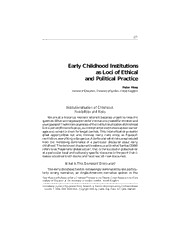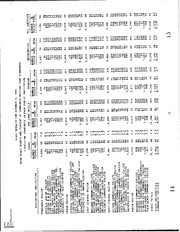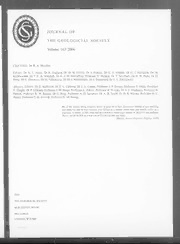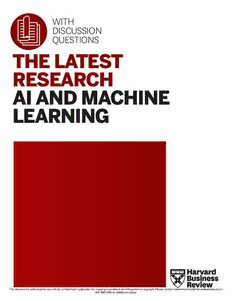
The Latest Research AI and Maschine Learning PDF
Preview The Latest Research AI and Maschine Learning
WITH DISCUSSION QUESTIONS THE LATEST RESEARCH AI AND MACHINE LEARNING This document is authorized for use only by Jo Teichmann (jo@ceden.io). Copying or posting is an infringement of copyright. Please contact customerservice@harvardbusiness.org or 800-988-0886 for additional copies. Introduction “In the sphere of business, AI is poised have a transformational impact … the bottleneck now is in management, implementation, and business imagination.” ERIK BRYNJOLFSSON AND ANDREW MCAFEE, “The Business of Artificial Intelligence” There’s no longer any doubt that AI and machine learning will transform entire professions and industries in the coming years. And while the long-term reverberations of AI’s expanding role in society are fascinating and worrying, at HBR our authors are focused on how organizations can put it into use now. We all still wonder (and worry about) what business will look like in a decade, but machine intelligence is a technology with implications for your company today. In this collection, we’ve selected some of HBR’s most important research, analysis, and case studies on AI and machine learning from the past two years to help you understand what you and your colleagues need to know about machine intelligence, now. The first section, Understanding AI and Machine Learning, explains the current business potential of AI, helps you identify opportunities in your organization, and provides an inside look at how leaders in the field of AI are deploying the technology in their own companies. The next section, How AI Is Being Used Now, presents current uses of AI ranging from back-office processes in health care to research on board selection to out-of-the-box marketing products for automotive retail. Finally, The Near Future looks ahead to what’s coming next in AI, with our authors predicting that we’ll see new ways of collaborating with machines and increasing automation in more industries and job functions. The Latest Research: AI and Machine Learning provides you with today’s essential thinking on machine intelligence in business. Use it to kick off urgent conversations about how to implement AI initiatives in your organization. At the end of each article, you’ll find discussion questions to share with your team and help you apply what you’ve learned across your company. ©2018 HARVARD BUSINESS SCHOOL PUBLISHING. ALL RIGHTS RESERVED. 1 This document is authorized for use only by Jo Teichmann (jo@ceden.io). Copying or posting is an infringement of copyright. Please contact customerservice@harvardbusiness.org or 800-988-0886 for additional copies. Table of Contents UNDERSTANDING AI AND MACHINE LEARING: WHAT THEY ARE AND HOW TO USE THEM 80 How Harley-Davidson Used Artificial Intelligence to Increase New York Sales Leads by 2,390% 4 The Business of Artificial Intelligence By Brad Power By Erik Brynjolfsson and Andrew McAfee 86 Machine Learning Can Help B2B Firms Learn More About Their Customers 14 Deep Learning Will Radically Change the Ways We Interact with Technology By Stephan Kudyba and Thomas H. Davenport By Aditya Singh 92 How We Built a Virtual Scheduling Assistant at Microsoft 24 Inside Facebook’s AI Workshop By Andrés Monroy-Hernández and Justin An Interview with Joaquin Candela by Scott Cranshaw Berinato 98 How Companies Are Already Using AI 31 How to Spot a Machine Learning Opportunity, Even If You Aren’t a Data Scientist By Satya Ramaswamy By Kathryn Hume THE NEAR FUTURE: 37 Is Your Company’s Data Actually Valuable CHANGES TO JOBS, THE ECONOMY, AND SOCIETY in the AI Era? By Ajay Agrawal, Joshua Gans, and Avi Goldfarb 106 Collaborative Intelligence: Humans and AI Are Joining Forces 42 How AI Fits into Your Data Science Team By H. James Wilson and Paul Daugherty Q&A with Hilary Mason 118 Robo-Advisers Are Coming to Consulting HOW AI IS BEING USED NOW: and Corporate Strategy NEW PROCESSES, INSIGHTS, AND PRODUCTS By Thomas H. Davenport, Barry Libert, and Megan Beck 46 Artificial Intelligence for the Real World 125 10 Promising AI Applications in Health Care By Thomas H. Davenport and Rajeev Ronanki By Brian Kalis, Matt Collier, and Richard Fu 57 How AI Is Taking the Scut Work Out of 131 The First Wave of Corporate AI Is Doomed to Fail Health Care By Kartik Hosanagar and Apoorv Saxena By Jonathan Bush 137 AI Is the Future of Cybersecurity, for Better 62 3 Ways Companies Are Building a Business and for Worse Around AI By Roman V. Yampolskiy By Quentin Hardy 142 How AI Could Help the Public Sector 69 What Changes When AI Is So Accessible That Everyone Can Use It? By Emma Martinho-Truswell By H. James Wilson and Paul Daugherty 147 How Will AI Change Work? Here Are 5 Schools of Thought 74 Research: Could Machine Learning Help Companies Select Better Board Directors? By Mark Knickrehm By Isil Erel, Léa H. Stern, Chenhao Tan, and 153 Related Resources Michael S. Weisbach ©2018 HARVARD BUSINESS SCHOOL PUBLISHING. ALL RIGHTS RESERVED. 222 This document is authorized for use only by Jo Teichmann (jo@ceden.io). Copying or posting is an infringement of copyright. Please contact customerservice@harvardbusiness.org or 800-988-0886 for additional copies. UNDERSTANDING AI AND MACHINE LEARNING: WHAT THEY ARE AND HOW TO USE THEM ©2018 HARVARD BUSINESS SCHOOL PUBLISHING. ALL RIGHTS RESERVED. 3 This document is authorized for use only by Jo Teichmann (jo@ceden.io). Copying or posting is an infringement of copyright. Please contact customerservice@harvardbusiness.org or 800-988-0886 for additional copies. THE BUSINESS OF ARTIFICIAL INTELLIGENCE WHAT IT CAN — AND CANNOT — DO FOR YOUR ORGANIZATION BY ERIK BRYNJOLFSSON AND ANDREW MCAFEE For more than 250 years the fundamental drivers of economic growth have been technological innovations. The most important of these are what economists call general-purpose technologies — a category that includes the steam engine, electricity, and the internal combustion engine. Each one catalyzed waves of complementary innovations and opportunities. The internal combustion engine, for example, gave rise to cars, trucks, airplanes, chain saws, and lawnmowers, along with big-box retailers, shopping centers, cross- docking warehouses, new supply chains, and, when you think about it, suburbs. Companies as diverse as Walmart, UPS, and Uber found ways to leverage the technology to create profitable new business models. ©2018 HARVARD BUSINESS SCHOOL PUBLISHING. ALL RIGHTS RESERVED. 4 This document is authorized for use only by Jo Teichmann (jo@ceden.io). Copying or posting is an infringement of copyright. Please contact customerservice@harvardbusiness.org or 800-988-0886 for additional copies. THE BUSINESS OF ARTIFICIAL INTELLIGENCE ERIK BRYNJOLFSSON AND ANDREW MCAFEE THE AUTHORS ERIK BRYNJOLFSSON AND ANDREW MCAFEE The most important general-purpose technology Erik Brynjolfsson and developed pricing Harnessing Our Digital of our era is artificial intelligence, particularly machine (@erikbryn) is the director and bundling models for Future (2017) and The of MIT’s Initiative on the information goods. He Second Machine Age: Work, learning (ML) — that is, the machine’s ability to keep Digital Economy, the earned his AB and his SM in Progress, and Prosperity improving its performance without humans having Schussel Family Professor applied mathematics and in a Time of Brilliant to explain exactly how to accomplish all the tasks it’s of Management Science decision sciences at Harvard Technologies (2014), which given. Within just the past few years machine learning at the MIT Sloan School and his PhD in managerial was a New York Times best has become far more effective and widely available. We of Management, and a economics at the Sloan seller and was shortlisted can now build systems that learn how to perform tasks research associate at NBER. School. for the Financial Times/ His research examines Brynjolfsson is the author McKinsey Business Book on their own. the effects of information of several books, including, of the Year Award. McAfee Why is this such a big deal? Two reasons. First, we technologies on business with Andrew McAfee, writes academic papers, a humans know more than we can tell: We can’t explain strategy, productivity Machine, Platform, Crowd: blog for the Financial Times, exactly how we’re able to do a lot of things — from rec- and performance, digital Harnessing Our Digital and articles for publications ognizing a face to making a smart move in the ancient commerce, and intangible Future (2017) and the New including Harvard Business Asian strategy game of Go. Prior to ML, this inability to assets. At MIT he teaches York Times best seller The Review, the Economist, the courses on the economics Second Machine Age: Work, Wall Street Journal, and articulate our own knowledge meant that we couldn’t of information and the Progress, and Prosperity the New York Times. He automate many tasks. Now we can. Analytics Lab. in a Time of Brilliant has talked about his work Second, ML systems are often excellent learners. Brynjolfsson was among Technologies (2014). You on Charlie Rose and 60 They can achieve superhuman performance in a wide the first researchers to can find his papers here. Minutes; at TED, Davos, and range of activities, including detecting fraud and di- measure IT’s productivity Andrew McAfee the Aspen Ideas Festival; agnosing disease. Excellent digital learners are being contributions and the (@amcafee), a principal and in front of many other complementary role of research scientist at audiences. deployed across the economy, and their impact will be organizational capital MIT, studies how digital McAfee was educated profound. and other intangibles. His technologies are changing at Harvard and MIT, where In the sphere of business, AI is poised have a research provided the first business, the economy, he is a cofounder of the transformational impact, on the scale of earlier gen- quantification of online and society. With Erik institute’s Initiative on the eral-purpose technologies. Although it is already in product variety value, Brynjolfsson he coauthored Digital Economy. use in thousands of companies around the world, known as the “long tail,” Machine, Platform, Crowd: most big opportunities have not yet been tapped. The effects of AI will be magnified in the coming decade, as manufacturing, retailing, transportation, finance, WHAT CAN AI DO TODAY? health care, law, advertising, insurance, entertain- ment, education, and virtually every other industry The term artificial intelligence was coined in 1955 by transform their core processes and business models to John McCarthy, a math professor at Dartmouth who take advantage of machine learning. The bottleneck organized the seminal conference on the topic the fol- now is in management, implementation, and business lowing year. Ever since, perhaps in part because of its imagination. evocative name, the field has given rise to more than Like so many other new technologies, however, AI its share of fantastic claims and promises. In 1957 the has generated lots of unrealistic expectations. We see economist Herbert Simon predicted that computers business plans liberally sprinkled with references to would beat humans at chess within 10 years. (It took machine learning, neural nets, and other forms of the 40.) In 1967 the cognitive scientist Marvin Minsky technology, with little connection to its real capabilities. said, “Within a generation the problem of creating Simply calling a dating site “AI-powered,” for example ‘artificial intelligence’ will be substantially solved.” doesn’t make it any more effective, but it might help Simon and Minsky were both intellectual giants, but with fundraising. This article will cut through the noise they erred badly. Thus it’s understandable that dra- to describe the real potential of AI, its practical implica- matic claims about future breakthroughs meet with a tions, and the barriers to its adoption. certain amount of skepticism. ALTHOUGH AI IS ALREADY IN USE IN THOUSANDS OF COMPANIES AROUND THE WORLD, MOST BIG OPPORTUNITIES HAVE NOT YET BEEN TAPPED. ©2018 HARVARD BUSINESS SCHOOL PUBLISHING. ALL RIGHTS RESERVED. 5 This document is authorized for use only by Jo Teichmann (jo@ceden.io). Copying or posting is an infringement of copyright. Please contact customerservice@harvardbusiness.org or 800-988-0886 for additional copies. THE BUSINESS OF ARTIFICIAL INTELLIGENCE ERIK BRYNJOLFSSON AND ANDREW MCAFEE Let’s start by exploring what AI is already doing PUPPY OR MUFFIN? PROGRESS IN and how quickly it is improving. The biggest advances have been in two broad areas: perception and cogni- IMAGE RECOGNITION tion. In the former category some of the most practical advances have been made in relation to speech. Voice Machines have made real strides in recognition is still far from perfect, but millions of peo- distinguishing among similar-looking ple are now using it — think Siri, Alexa, and Google categories of images. Assistant. The text you are now reading was originally dictated to a computer and transcribed with sufficient accuracy to make it faster than typing. A study by the Stanford computer scientist James Landay and col- leagues found that speech recognition is now about three times as fast, on average, as typing on a cell phone. The error rate, once 8.5%, has dropped to 4.9%. What’s striking is that this substantial improvement has come not over the past 10 years but just since the sum- mer of 2016. Image recognition, too, has improved dramatically. You may have noticed that Facebook and other apps now recognize many of your friends’ faces in posted photos and prompt you to tag them with their names. An app running on your smartphone will recognize vir- tually any bird in the wild. Image recognition is even re- placing ID cards at corporate headquarters. Vision sys- tems, such as those used in self-driving cars, formerly made a mistake when identifying a pedestrian as often as once in 30 frames (the cameras in these systems re- cord about 30 frames a second); now they err less often than once in 30 million frames. The error rate for recog- nizing images from a large database called ImageNet, KAREN ZACK/@TEENYBISCUIT with several million photographs of common, obscure, or downright weird images, fell from higher than 30% in 2010 to about 4% in 2016 for the best systems. (See the VISION ERROR RATE exhibit “Puppy or Muffin?”) The speed of improvement has accelerated rapidly 30% in recent years as a new approach, based on very large Algorithms or “deep” neural nets, was adopted. The ML approach 25 for vision systems is still far from flawless — but even people have trouble quickly recognizing puppies’ faces or, more embarrassingly, see their cute faces where 20 none exist. The second type of major improvement has been in cognition and problem solving. Machines have al- 15 ready beaten the finest (human) players of poker and Go — achievements that experts had predicted would 10 take at least another decade. Google’s DeepMind team has used ML systems to improve the cooling efficiency Humans at data centers by more than 15%, even after they were 5 optimized by human experts. Intelligent agents are be- ing used by the cybersecurity company Deep Instinct to detect malware, and by PayPal to prevent money 0 laundering. A system using IBM technology auto- 2010 2011 2012 2013 2014 2015 2016 mates the claims process at an insurance company in Singapore, and a system from Lumidatum, a data SOURCE ELECTRONIC FRONTIER FOUNDATION © HBR.ORG ©2018 HARVARD BUSINESS SCHOOL PUBLISHING. ALL RIGHTS RESERVED. HBR.ORG THE BIG IDEA 5 6 This document is authorized for use only by Jo Teichmann (jo@ceden.io). Copying or posting is an infringement of copyright. Please contact customerservice@harvardbusiness.org or 800-988-0886 for additional copies. THE BUSINESS OF ARTIFICIAL INTELLIGENCE ERIK BRYNJOLFSSON AND ANDREW MCAFEE science platform firm, offers timely advice to improve SUPERVISED LEARNING SYSTEMS customer support. Dozens of companies are using ML to decide which trades to execute on Wall Street, As two pioneers in the field, Tom Mitchell and Michael I. Jordan, and more and more credit decisions are made with its help. Amazon employs ML to optimize inventory have noted, most of the recent progress in machine learning and improve product recommendations to custom- involves mapping from a set of inputs to a set of outputs. Some ers. Infinite Analytics developed one ML system to examples: predict whether a user would click on a particular ad, improving online ad placement for a global consumer packaged goods company, and another to improve Input X Output Y Application customers’ search and discovery process at a Brazilian online retailer. The first system increased advertising Voice recording Transcript Speech recognition ROI threefold, and the second resulted in a $125 mil- Historical market data Future market data Trading bots lion increase in annual revenue. Machine learning systems are not only replacing Photograph Caption Image tagging older algorithms in many applications, but are now Drug chemical properties Treatment efficacy Pharma R&D superior at many tasks that were once done best by humans. Although the systems are far from perfect, Store transaction details Is the transaction fraudulent? Fraud detection their error rate — about 5% — on the ImageNet data- Recipe ingredients Customer reviews Food recommendations base is at or better than human-level performance. Purchase histories Future purchase behavior Customer retention Voice recognition, too, even in noisy environments, is now nearly equal to human performance. Reaching this Car locations and speed Traffic flow Traffic lights threshold opens up vast new possibilities for transform- Faces Names Face recognition ing the workplace and the economy. Once AI-based systems surpass human performance at a given task, they are much likelier to spread quickly. For instance, Aptonomy and Sanbot, makers respectively of drones and robots, are using improved vision systems to auto- UNDERSTANDING MACHINE LEARNING mate much of the work of security guards. The software company Affectiva, among others, is using them to rec- The most important thing to understand about ML is ognize emotions such as joy, surprise, and anger in fo- that it represents a fundamentally different approach cus groups. And Enlitic is one of several deep-learning to creating software: The machine learns from exam- start-ups that use them to scan medical images to help ples, rather than being explicitly programmed for a diagnose cancer. particular outcome. This is an important break from These are impressive achievements, but the appli- previous practice. For most of the past 50 years, ad- cability of AI-based systems is still quite narrow. For in- vances in information technology and its applica- stance, their remarkable performance on the ImageNet tions have focused on codifying existing knowledge database, even with its millions of images, doesn’t al- and procedures and embedding them in machines. ways translate into similar success “in the wild,” where Indeed, the term “coding” denotes the painstaking lighting conditions, angles, image resolution, and con- process of transferring knowledge from developers’ text may be very different. More fundamentally, we can heads into a form that machines can understand and marvel at a system that understands Chinese speech execute. This approach has a fundamental weakness: and translates it into English, but we don’t expect such Much of the knowledge we all have is tacit, meaning a system to know what a particular Chinese character that we can’t fully explain it. It’s nearly impossible for means — let alone where to eat in Beijing. If someone us to write down instructions that would enable an- performs a task well, it’s natural to assume that the other person to learn how to ride a bike or to recognize person has some competence in related tasks. But ML a friend’s face. systems are trained to do specific tasks, and typically In other words, we all know more than we can tell. their knowledge does not generalize. The fallacy that a This fact is so important that it has a name: Polanyi’s computer’s narrow understanding implies broader un- Paradox, for the philosopher and polymath Michael derstanding is perhaps the biggest source of confusion, Polanyi, who described it in 1964. Polanyi’s Paradox not and exaggerated claims, about AI’s progress. We are far only limits what we can tell one another but has histor- from machines that exhibit general intelligence across ically placed a fundamental restriction on our ability to diverse domains. endow machines with intelligence. For a long time that ©2018 HARVARD BUSINESS SCHOOL PUBLISHING. ALL RIGHTS RESERVED. HBR.ORG THE BIG IDEA 6 7 This document is authorized for use only by Jo Teichmann (jo@ceden.io). Copying or posting is an infringement of copyright. Please contact customerservice@harvardbusiness.org or 800-988-0886 for additional copies. THE BUSINESS OF ARTIFICIAL INTELLIGENCE ERIK BRYNJOLFSSON AND ANDREW MCAFEE limited the activities that machines could productively of the field, deep neural nets don’t seem to level off in ABOVE: THIS IS WHAT IT MEANS TO WORK WITH ARTIFICIAL INTELLIGENCE. perform in the economy. this way: More data leads to better and better predic- THE RESULTS ARE HUMAN AND NOT Machine learning is overcoming those limits. In this tions. Some very large systems are trained by using 36 HUMAN. RECOGNIZABLE BUT ALSO UNEXPECTED. ARE THEY BEAUTIFUL? second wave of the second machine age, machines built million examples or more. Of course, working with ex- FRIGHTENING? DELIGHTFUL? by humans are learning from examples and using struc- tremely large data sets requires more and more process- tured feedback to solve on their own problems such as ing power, which is one reason the very big systems are Polanyi’s classic one of recognizing a face. often run on supercomputers or specialized computer architectures. DIFFERENT FLAVORS OF MACHINE LEARNING Any situation in which you have a lot of data on be- Artificial intelligence and machine learning come havior and are trying to predict an outcome is a poten- in many flavors, but most of the successes in recent tial application for supervised learning systems. Jeff years have been in one category: supervised learning Wilke, who leads Amazon’s consumer business, says systems, in which the machine is given lots of exam- that supervised learning systems have largely replaced ples of the correct answer to a particular problem. the memory-based filtering algorithms that were used This process almost always involves mapping from a to make personalized recommendations to customers. set of inputs, X, to a set of outputs, Y. For instance, the In other cases, classic algorithms for setting inventory inputs might be pictures of various animals, and the levels and optimizing supply chains have been replaced correct outputs might be labels for those animals: dog, by more efficient and robust systems based on machine cat, horse. The inputs could also be waveforms from learning. JPMorgan Chase introduced a system for re- a sound recording and the outputs could be words: viewing commercial loan contracts; work that used to “yes,” “no,” “hello,” “good-bye.” (See the exhibit take loan officers 360,000 hours can now be done in a “Supervised Learning Systems.”) few seconds. And supervised learning systems are now Successful systems often use a training set of data being used to diagnose skin cancer. These are just a few with thousands or even millions of examples, each of examples. which has been labeled with the correct answer. The It’s comparatively straightforward to label a body of system can then be let loose to look at new examples. data and use it to train a supervised learner; that’s why If the training has gone well, the system will predict an- supervised ML systems are more common than unsu- swers with a high rate of accuracy. pervised ones, at least for now. Unsupervised learning The algorithms that have driven much of this suc- systems seek to learn on their own. We humans are ex- cess depend on an approach called deep learning, which cellent unsupervised learners: We pick up most of our uses neural networks. Deep learning algorithms have a knowledge of the world (such as how to recognize a significant advantage over earlier generations of ML tree) with little or no labeled data. But it is exceedingly algorithms: They can make better use of much larger difficult to develop a successful machine learning sys- data sets. The old systems would improve as the num- tem that works this way. ber of examples in the training data grew, but only up to If and when we learn to build robust unsupervised a point, after which additional data didn’t lead to better learners, exciting possibilities will open up. These ma- predictions. According to Andrew Ng, one of the giants chines could look at complex problems in fresh ways to ©2018 HARVARD BUSINESS SCHOOL PUBLISHING. ALL RIGHTS RESERVED. HBR.ORG THE BIG IDEA 7 8 This document is authorized for use only by Jo Teichmann (jo@ceden.io). Copying or posting is an infringement of copyright. Please contact customerservice@harvardbusiness.org or 800-988-0886 for additional copies. THE BUSINESS OF ARTIFICIAL INTELLIGENCE ERIK BRYNJOLFSSON AND ANDREW MCAFEE help us discover patterns — in the spread of diseases, encountered before, speeding up the “pick and place” in price moves across securities in a market, in custom- process in distribution centers for consumer goods. ers’ purchase behaviors, and so on — that we are cur- In reinforcement learning systems the programmer rently unaware of. Such possibilities lead Yann LeCun, specifies the current state of the system and the goal, the head of AI research at Facebook and a professor at lists allowable actions, and describes the elements of NYU, to compare supervised learning systems to the the environment that constrain the outcomes for each frosting on the cake and unsupervised learning to the of those actions. Using the allowable actions, the sys- cake itself. tem has to figure out how to get as close to the goal as Another small but growing area within the field is possible. These systems work well when humans can reinforcement learning. This approach is embedded specify the goal but not necessarily how to get there. in systems that have mastered Atari video games and For instance, Microsoft used reinforcement learning to board games like Go. It is also helping to optimize data select headlines for MSN.com news stories by “reward- center power usage and to develop trading strategies for ing” the system with a higher score when more visitors BELOW: LOOK DEEP, AND YOU’LL SEE the stock market. Robots created by Kindred use ma- clicked on the link. The system tried to maximize its THE HUMAN IN THE ALGORITHM. LOOK DEEPER, AND YOU’LL SEE THE chine learning to identify and sort objects they’ve never score on the basis of the rules its designers gave it. Of ALGORITHM IN THE INTELLIGENCE. DESIGNING AND IMPLEMENTING NEW COMBINATIONS OF TECHNOLOGIES, HUMAN SKILLS, AND CAPITAL ASSETS TO MEET CUSTOMERS’ NEEDS REQUIRES LARGE-SCALE CREATIVITY AND PLANNING. IT IS A TASK THAT MACHINES ARE NOT VERY GOOD AT. ©2018 HARVARD BUSINESS SCHOOL PUBLISHING. ALL RIGHTS RESERVED. 9 HBR.ORG THE BIG IDEA 8 This document is authorized for use only by Jo Teichmann (jo@ceden.io). Copying or posting is an infringement of copyright. Please contact customerservice@harvardbusiness.org or 800-988-0886 for additional copies.
The list of books you might like

What Happened to You?

The 5 Second Rule: Transform your Life, Work, and Confidence with Everyday Courage

Believe Me

Corrupt (Devil's Night #1)

Convergent close-coupling calculations of two-photon double ionization of helium

Constraints on UED KK-neutrino dark matter from magnetic dipole moments

SQE Services Agreement

Masters at Arms
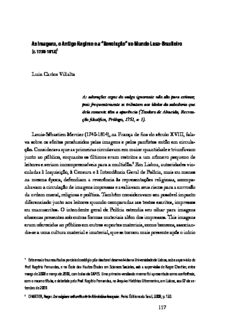
As imagens, o Antigo Regime e a “Revolução” no Mundo Luso-Brasileiro

Warum Manner nicht zuhoren und Frauen schlecht einparken

Byrd v. Aaron's, Inc.
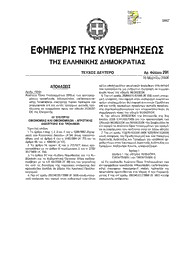
Greek Government Gazette: Part 2, 2006 no. 291

Kickin' It (Red Card)

The Brooklyn Paper Volume 29 Issue 48
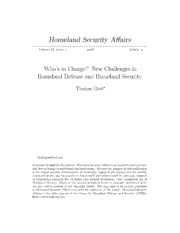
DTIC ADA483967: Who's in Charge? New Challenges in Homeland Defense and Homeland Security
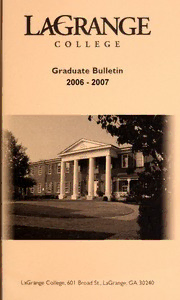
Graduate Bulletin 2006-2007, LaGrange College, LaGrange, Georgia
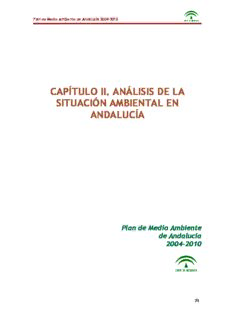
capítulo ii. análisis de la situación ambiental en andalucía

BY ORDER OF THE COMMANDER 62D AIRLIFT WING 62 AIRLIFT WING INSTRUCTION 48-148 ...

The Brooklyn Paper Volume 29 Issue 29
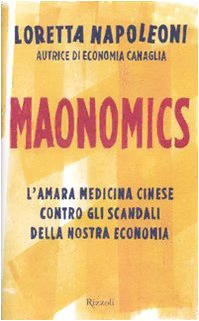
Maonomics. L’amara medicina cinese contro gli scandali della nostra economia

